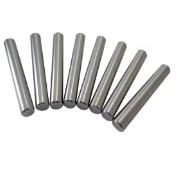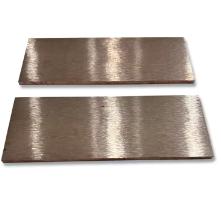**The Secret Sparkle: Which Metals Can Actually Wear Copper Like a Second Skin?**
(What Metals Can Be Copper Plated)
**1. What Exactly is Copper Plating?**
Copper plating sounds fancy. It’s actually pretty straightforward. Imagine dipping an object into a special bath. This bath contains dissolved copper. Electricity flows through the bath. This causes a thin, even layer of real copper to stick firmly to the object’s surface. It’s like giving the object a new copper skin. This process is called electroplating. The copper layer bonds tightly to the base metal underneath. The result? The object gains the look, feel, and some key properties of copper itself. It’s not just paint. It’s real metal added to the surface.
**2. Why Bother with Copper Plating?**
Why coat something in copper? There are several excellent reasons. Copper conducts electricity extremely well. Plating something improves its ability to carry electrical current. This is vital for electrical parts and wires. Copper also conducts heat efficiently. Plating helps spread heat evenly. Copper resists corrosion better than many common metals, like steel. The copper layer acts like a shield. It protects the base metal underneath from rust and decay. Copper looks great. Its warm, reddish-brown shine is instantly recognizable. Plating offers a beautiful, durable finish. It’s often used as a base layer too. Other metals, like nickel or chrome, stick much better to a copper undercoat. This makes the final finish stronger and longer-lasting. Finally, copper is naturally antimicrobial. Surfaces coated in copper help kill germs. This is useful in hospitals and kitchens.
**3. How Does Copper Plating Actually Work?**
Getting that perfect copper skin involves careful steps. First, the metal object must be cleaned thoroughly. Any dirt, oil, or grease must be completely removed. Even fingerprints can ruin the plating. Next, the surface often gets activated. This means treating it with special chemicals. These chemicals make the surface ready to bond tightly with the copper. Then comes the plating bath itself. The object becomes the cathode (negative charge) in an electrical circuit. Copper anodes (positive charge) are also placed in the bath. The bath contains copper ions dissolved in a special solution. When electricity flows, copper ions are attracted to the object (cathode). They land on its surface and form a solid metal layer. The thickness depends on time and current strength. After plating, the object is rinsed well. It might get additional treatments for extra protection or shine.
**4. Applications: Where Copper Plated Metals Shine**
Copper plating pops up everywhere once you know where to look. Electronics rely heavily on it. Circuit boards use copper plating to create the pathways for electricity. Connectors, terminals, and wires are often copper plated for better conductivity and corrosion resistance. Automotive parts benefit too. Radiator components use copper plating for heat transfer. Under-the-hood electrical contacts get plated for reliability. Decorative items get a beautiful copper finish. Jewelry, awards, art pieces, and home hardware all use copper plating for its warm glow. It’s a popular base layer for chrome plating on car parts and faucets. The building industry uses it. Plated steel roofing and architectural details resist weathering. Industrial equipment uses copper plating on bearings and bushings. It reduces friction. Its germ-fighting ability makes it ideal for touch surfaces in public spaces. Think door handles, railings, and hospital equipment.
**5. Copper Plating FAQs: Your Top Questions Answered**
**Can you copper plate any metal?** No. Some metals plate easily. Others are tricky or impossible. Common good candidates include steel, iron, nickel, brass, bronze, and even other copper. Aluminum and stainless steel are harder. They need special, complex pre-treatment. Zinc and its alloys (like die-cast parts) also require careful preparation. Pure plastics or ceramics need a conductive coating first before plating.
**How long does copper plating last?** This varies a lot. It depends on the base metal, the plating thickness, the environment, and if it gets a protective topcoat. Thin plating in harsh conditions (like salt spray) wears faster. Thick plating on well-prepared steel indoors can last decades. Tarnishing (turning dull or green) happens naturally over time but doesn’t mean failure.
**Does copper plating prevent rust?** Yes, it helps significantly. Copper corrodes much slower than steel or iron. A good copper layer acts as a barrier. It stops oxygen and water from reaching the base metal. This prevents rust. However, if the plating gets scratched deeply, the base metal underneath can still rust at that spot.
**Can copper plating be done at home?** Yes, simple kits exist. Achieving consistent, professional results is difficult. It involves handling chemicals and electricity safely. Proper waste disposal is crucial. For anything beyond small hobby projects, professional plating services are recommended.
(What Metals Can Be Copper Plated)
**Is copper plating expensive?** Compared to paint, yes. Compared to making the whole part from solid copper, it’s usually much cheaper. Cost depends on part size, complexity, required plating thickness, and quantity. The protective and functional benefits often outweigh the cost for industrial applications.
Inquiry us
if you want to want to know more, please feel free to contact us.


